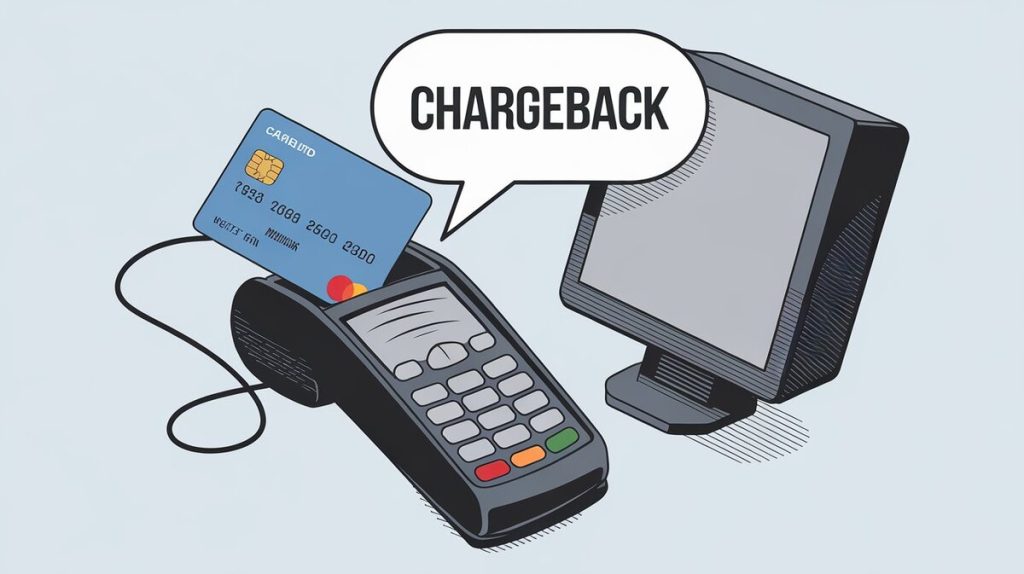Introduction
A chargeback is a forced reversal of a credit card transaction initiated by a cardholder’s issuing bank. Chargebacks were created to protect consumers from fraudulent transactions. However, they now present significant challenges for businesses, costing global merchants over $20 billion in 2020 alone (VISA, Mastercard). Each chargeback may cost businesses between $20 and $100 in fees, not including the loss of goods or services.
Understanding why chargebacks occur and taking steps to prevent them is crucial for minimizing financial losses. Below is a clear breakdown of the causes, consequences, and solutions for handling chargebacks.
Common Reasons for Chargebacks
1. Fraudulent Transactions
Fraud accounts for 30-40% of all chargebacks, especially in card-not-present (CNP) transactions. This is common in e-commerce, where stolen credit card information is used to make unauthorized purchases. Criminal fraud can be particularly damaging because merchants are often held responsible for transactions that turn out to be fraudulent (Mastercard).
2. Friendly Fraud
Friendly fraud, where legitimate customers dispute valid transactions, makes up 50-70% of chargebacks in some industries (2021 Stripe report). Customers may initiate chargebacks for various reasons, including forgetting about recurring charges or misunderstanding the product they purchased. This type of fraud can be difficult to detect and prevent since the customer is the one disputing the transaction.
3. Merchant Errors
Merchant errors, such as incorrect billing or unclear transaction descriptors, cause 10-15% of chargebacks. These errors can result from manual data entry mistakes or unrecognized charges that appear unfamiliar to customers. Common merchant mistakes include overcharging, processing duplicate payments, or using billing descriptors that differ from the brand name.
4. Goods Not Received/Not as Described
When customers do not receive goods or services as promised, or if the product is significantly different from its description, they may file a chargeback. In sectors like drop-shipping or high-volume online retail, businesses often see 12-20% of their chargebacks related to product or delivery disputes (VISA).

The Chargeback Process
The chargeback process is complex and can involve multiple steps for both cardholders and merchants:
- Cardholder Dispute: A customer disputes a transaction with their card issuer.
- Merchant Review: The merchant is informed of the dispute and asked to provide evidence (e.g., receipts, delivery confirmations).
- Bank Investigation: The card issuer reviews the provided evidence and decides whether the chargeback is valid.
- Arbitration: If neither party agrees with the bank’s decision, the dispute can be escalated to arbitration through the payment network (VISA, Mastercard).
Merchants often find this process time-consuming and expensive, especially if they face high chargeback volumes. Clear communication and strong customer support can often prevent disputes from escalating to the chargeback stage.
Chargeback Costs and Risks
Chargebacks carry significant costs beyond the reversal of the transaction amount:
- Fees: Each chargeback can incur a fee of $20 to $100 (Checkout.com). Even if a merchant wins a dispute, they are still liable for the fees.
- Reputation Damage: Frequent chargebacks affect how banks and payment processors view a business. Merchants with high chargeback rates may face penalties, higher transaction fees, or even loss of payment processing privileges.
Table 1: Chargeback Fees and Limits by Payment Processor
| Payment Processor | Chargeback Fee (Per Dispute) | Chargeback Ratio Limit (%) |
|---|---|---|
| Mastercard | $25 – $100 | 1% |
| VISA | $20 – $100 | 1% |
| Stripe | $15 – $50 | 0.9% |
| Checkout.com | $15 – $100 | 1% |
| Braintree | $25 – $75 | 0.9% |

How to Prevent Chargebacks
Preventing chargebacks requires a combination of clear policies, secure payment processing, and customer service excellence.
1. Improve Customer Communication
Chargebacks often stem from poor customer service or communication. Offering clear return and refund policies can prevent disputes. Customers should know exactly what to expect in terms of shipping, delivery times, and product quality. Clear policies and accessible support reduce the likelihood of a customer contacting their bank to dispute a charge.
- Solution: Businesses can partner with Merchanto.org, an official partner of VISA and Mastercard, for chargeback prevention and management. Merchanto.org provides solutions to help businesses handle disputes efficiently and minimize the risk of chargebacks. Learn more about Merchanto.org.
2. Use Secure Payment Methods
Investing in secure payment technologies can prevent fraud-related chargebacks. Businesses should implement EMV chip readers for card-present transactions and fraud detection algorithms for CNP transactions. These tools help verify customer identities and reduce the risk of unauthorized transactions.
- Solution: Businesses using 3D Secure 2.0 and tokenization technology report a 30% decrease in chargebacks related to fraud (Braintree). By requiring additional verification steps, merchants can reduce the risk of fraudulent charges being processed.
3. Accurate Product Descriptions
Ensure that product descriptions are detailed and accurate to avoid chargebacks related to “not as described” claims. Misleading product descriptions or poor-quality goods are common reasons for disputes. Businesses should invest in improving product quality and ensuring clear, precise descriptions in their listings.
4. Clear Billing Descriptors
Unrecognizable billing information can lead to customers disputing legitimate charges. Businesses should ensure that their billing descriptors match the brand name used in customer interactions. This prevents customers from thinking they’ve been charged by an unknown entity.
Table 2: Chargeback Reduction by Prevention Methods
| Prevention Method | Expected Reduction in Chargebacks (%) |
|---|---|
| 3D Secure Implementation | 30% |
| Clear Billing Descriptors | 15% |
| Transparent Return Policies | 20% |
| Partnering with Chargeback Solutions | 25% |
Industry-Specific Chargeback Rates
Chargeback rates can vary significantly by industry. Some industries, such as travel and hospitality, experience higher chargeback rates due to frequent cancellations and dissatisfaction with services. Digital goods businesses also face high dispute volumes due to their intangible nature.
Table 3: Average Chargeback Rates by Industry
| Industry | Average Chargeback Rate (%) |
|---|---|
| E-commerce | 0.6% |
| Digital Goods | 1.5% |
| Travel & Hospitality | 1.8% |
| Subscription Services | 2.5% |
Businesses in high-risk sectors must adopt stricter policies and utilize chargeback management services to avoid penalties from payment processors.
Conclusion
Chargebacks are a critical issue for businesses, particularly in online commerce. While fraud and merchant errors remain leading causes, friendly fraud and unclear policies also contribute to the growing problem. To manage and prevent chargebacks, businesses should focus on improving customer communication, adopting secure payment methods, and ensuring clear and accurate transaction descriptions.
By working with industry leaders businesses can reduce chargebacks and protect their revenue. Investing in the right tools and strategies is crucial to maintaining a healthy chargeback ratio and staying compliant with payment processors’ standards.



